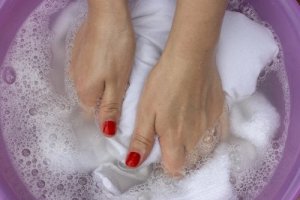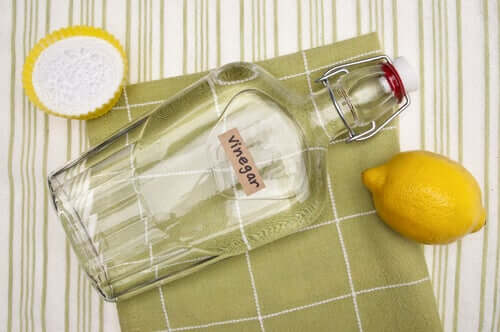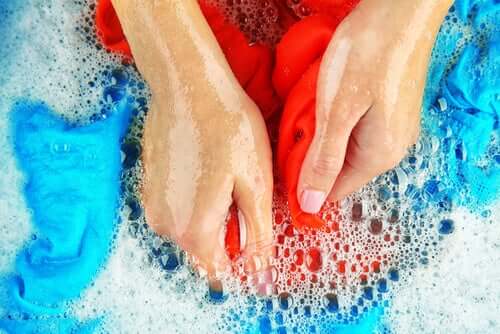How to Wash Shirt Cuffs and Collars

Have you tried every stain remover on the market on your cuff and collar stains but they still won’t go away?
If so, don’t worry. In this article, we’ll explain how to clean shirt cuffs and collars to eliminate stains once and for all.
How to Wash Shirt Cuffs and Collars
Cuffs and collars tend to stain more or acquire a characteristic yellowish color. This makes sense since collars are in direct contact with sweat. In addition, they also tend to get stained with makeup.
On the other hand, cuffs get almost as dirty as your hands, becoming one of the shirt parts that attract the most dirt and stains.
For that reason, it’s important for you to pay special attention to cuffs and collars and perform certain tasks before putting your shirts in the washing machine. This way, you’ll make sure they’re completely clean and free of stains.
Here are some tips. Take note and choose the ones that seem easiest or most appropriate!
You should read: Tricks for Bleaching Clothes Naturally
White Vinegar

White vinegar is one of the natural products that can make your clothes impeccable. In addition, it’s quite affordable.
The bleaching effect of white vinegar on clothing is well-known, which is why this product is used in many homes. In fact, it boosts detergent action and is also particularly effective against sweat stains.
To bleach your shirts with this ingredient:
- First, before putting the garment in the washing machine, dissolve two tablespoons of white vinegar in a glass of water.
- Then, apply the mixture on the stains with a toothbrush.
- After that, leave it on for 30 minutes.
- Rinse your garment thoroughly with running water.
- Finally, put the shirt in the washing machine (always following the instructions on the label).
Baking Soda
Just like white vinegar, baking soda can also whiten clothes.
- First of all, dissolve four tablespoons of baking soda in 1/4 tablespoon of water.
- Then, as in the previous tip, apply the mixture on the cuffs and collars with the help of a toothbrush. Brush gently in a circular motion.
- After that, rinse with plenty of water.
- Finally, put the shirt in the washing machine and wash according to the label’s washing instructions.
Ammonia
- First, mix equal amounts of water and ammonia in a container.
- Then, just as we explained with the other solutions, apply the mixture gently with a toothbrush.
- Finally, put the shirt in the washing machine at the temperature indicated on the label.
Dishwashing Soap to Wash Shirt Cuffs and Collars

Dishwashing soap can also help remove stains on cuffs and collars.
Here are the steps you need to take to clean them with this product:
- First, apply dishwashing soap and water on the stain. Make a lather and rub well.
- In addition, you can soak the shirt in this product if the stain is difficult to remove.
- Finally, put the shirt in the washing machine. You’ll love the results!
You should read: Naturally Eliminate Mildew from Your Washing Machine
Dishwashing soap, ammonia, baking soda, or vinegar: choose any of these options to wash your shirt cuffs and collars. However, always be careful. In fact, some delicate garments (such as silk garments, for example) may get ruined if they come into contact with ammonia or baking soda.
Therefore, you should apply these products on a non-visible part of the garment first. This way, you can check whether the product damages them or not before using them on the cuffs and collars.
Finally, remember that prevention is key. You could buy and wear shirt collar and cuff protectors that are available on the market. They’re quite efficient and also disposable.
In any case, we’re sure that these remedies will help you eliminate pesky shirt stains. As you’ve seen, they’re easy to apply, affordable, and natural.
Which one has worked for you?
This text is provided for informational purposes only and does not replace consultation with a professional. If in doubt, consult your specialist.








